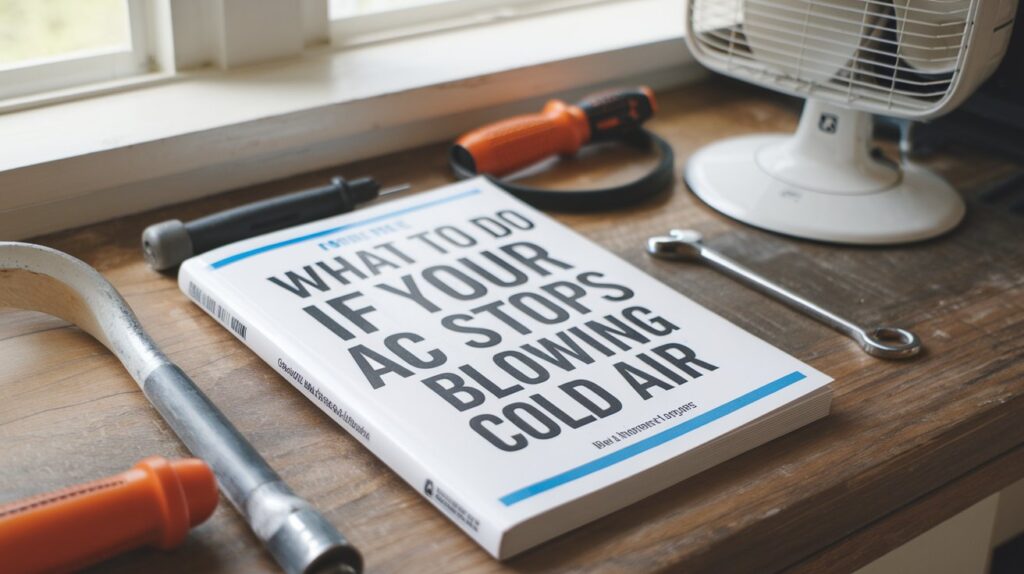When your air conditioning system suddenly stops blowing cold air, frustration can set in fast, especially on a hot summer day. You rely on that cool breeze to keep your home comfortable, and without it, everything from sleep to productivity can suffer. Before you panic or assume the worst, it’s important to understand that there are many possible reasons for the issue, some simple and others more involved. The good news is, many of these problems can be checked or addressed without professional intervention. We will explore the most common causes and offer logical, step-by-step guidance on what actions you can take to restore your comfort. Whether it’s a dirty air filter, a tripped breaker, or low refrigerant, understanding these signs early can save you money and prevent further damage.
Steps to Take When Your AC Isn’t Blowing Cold Air
Check the Thermostat Settings First
It may sound too simple, but thermostat settings are often the culprit when an AC stops producing cold air. Sometimes, the thermostat is accidentally switched from “cool” to “heat” or the temperature setting may have been increased without you realizing it. Start by making sure it’s set to “cool” and the desired temperature is lower than the current room temperature. Also, check if the fan setting is on “auto” rather than “on.” When set to “on,” the fan will run constantly, even when the AC isn’t actively cooling. This can make it feel like warm air is coming through the vents. If your thermostat is programmable, make sure there hasn’t been a schedule override that raised the temperature or switched the system mode. If your thermostat uses batteries, low power can also affect its ability to function correctly, so replacing them might fix the issue. This small check can often solve the problem quickly without needing to schedule an AC repair.
Inspect Your Air Filter for Dirt or Blockage
A clogged air filter is one of the most common and preventable reasons an AC might stop blowing cold air. The filter’s job is to trap dust, pollen, and other particles so they don’t circulate through your system. Over time, this buildup restricts airflow, making it harder for the system to push cooled air through your ducts and into your living spaces. If the airflow is compromised, the air conditioner can begin to overheat or even freeze up. Locate the air filter-usually found near the return air duct or inside the air handler-and pull it out to check for dirt. If it looks gray or clogged, replacing it with a new one might restore proper airflow and cooling. Filters should be checked every 30 to 60 days, especially during heavy usage periods. By keeping them clean, you help your AC run more efficiently and avoid strain on the components that can lead to more serious issues.
Examine the Outdoor Unit for Obstructions
Your AC system depends on the outdoor condenser unit to release the heat it pulls from inside your home. If this unit is blocked or covered in debris such as leaves, branches, or dirt, it can’t function properly. This restriction can prevent the system from completing the cooling cycle, resulting in lukewarm air coming from your vents. Start by turning off the power to the system for safety. Then, inspect the condenser unit for any visible obstructions. Clear away grass, leaves, and other debris within two feet of the unit. Also, check the coil fins for dirt or damage; gently clean them using a soft brush or hose if they appear dusty or clogged. Avoid using high-pressure water, as it can bend the fins. If your AC still doesn’t cool after cleaning the outdoor unit, it may indicate a deeper issue like a failing compressor or low refrigerant, which would require professional service to address.
Check for Ice Buildup on the Coils
Believe it or not, ice forming on your AC’s evaporator coils can stop it from cooling. When the coils freeze, airflow is blocked, and warm air remains inside your home. This freezing can be triggered by poor airflow due to dirty filters, closed vents, or blocked ducts. Low refrigerant can also be a cause, as it reduces pressure in the system and lowers the temperature around the coils. Open the indoor unit’s access panel and look for frost or ice. If you see any, turn off the AC immediately and let it thaw completely, which may take several hours. Do not try to scrape the ice, as this can damage the coils. After the system is defrosted, replace the filter if it’s dirty and check for airflow issues. If ice continues to form or the system doesn’t return to cooling, this may be a signal that refrigerant levels are low or that there’s a leak, which needs professional attention.
When your AC stops blowing cold air, it’s easy to feel overwhelmed, but taking a methodical approach can often reveal a manageable cause. From checking the thermostat and replacing a dirty air filter to inspecting the outdoor unit and watching for frozen coils, many of these fixes are straightforward. Ensuring proper airflow and power supply can resolve the problem in several cases. However, if your air conditioner still refuses to cool, it may indicate refrigerant or mechanical issues that require professional repair. By staying informed and addressing issues promptly, you can keep your system running reliably and your home cool all season long.

